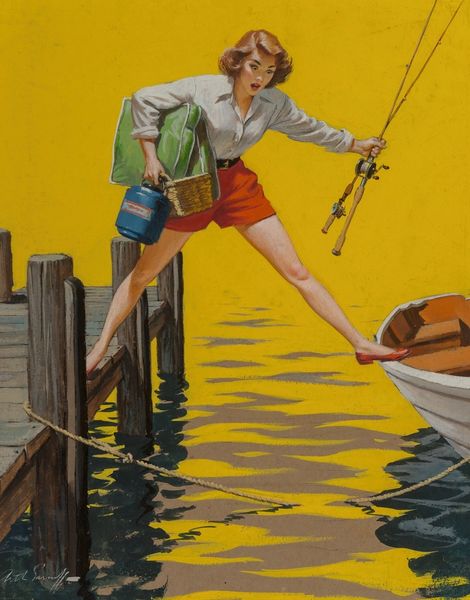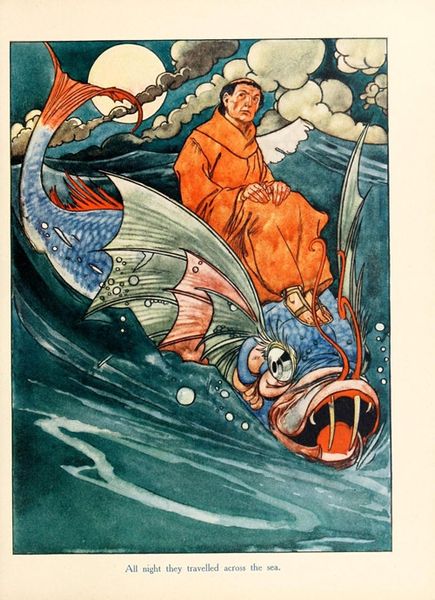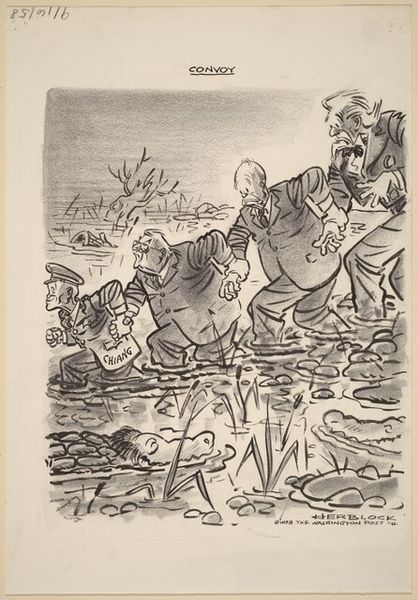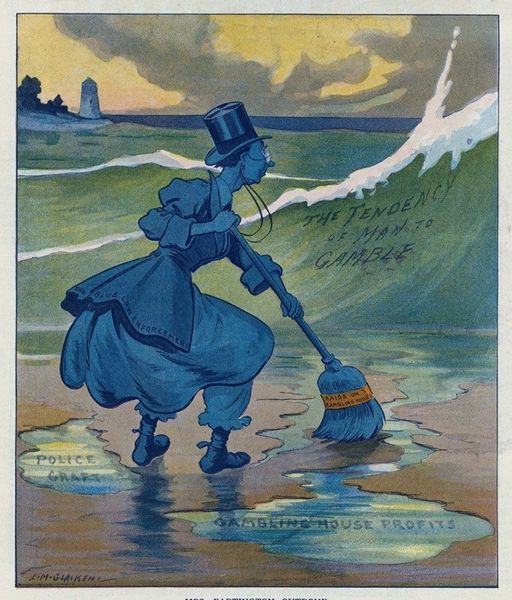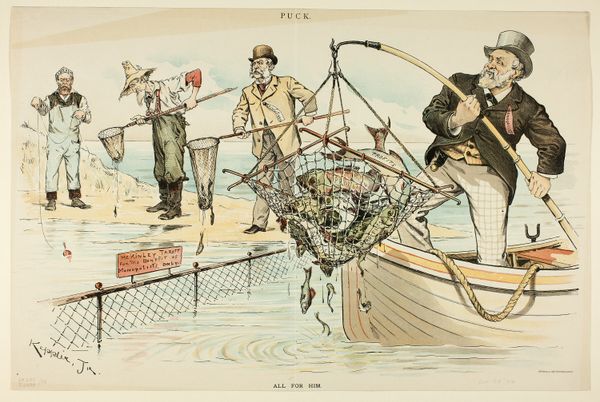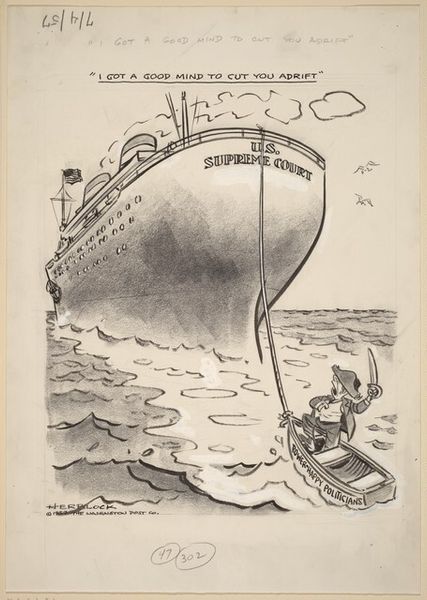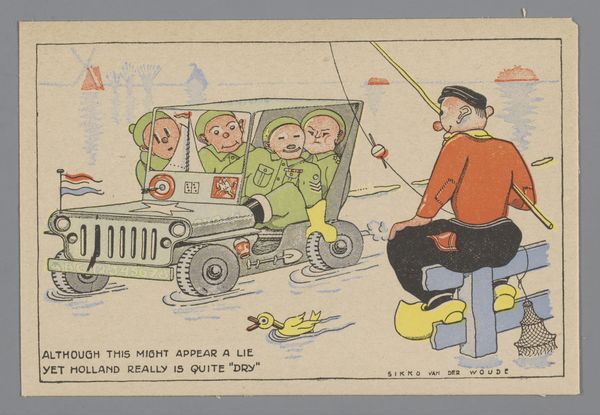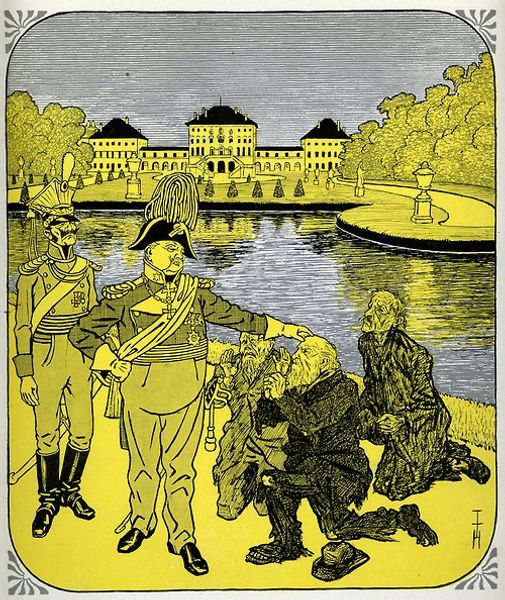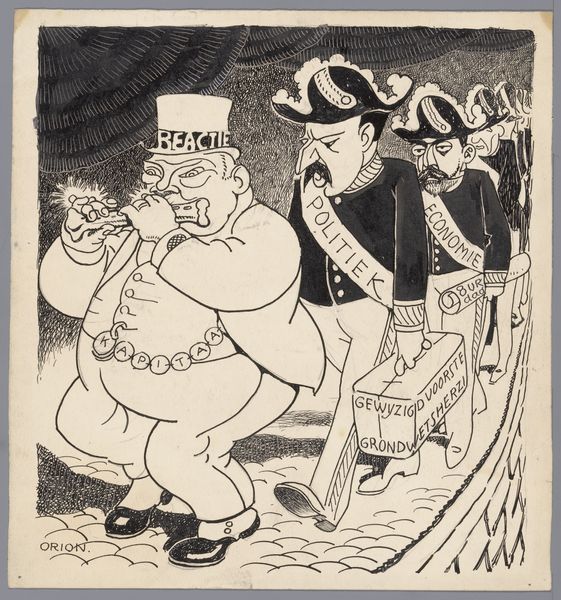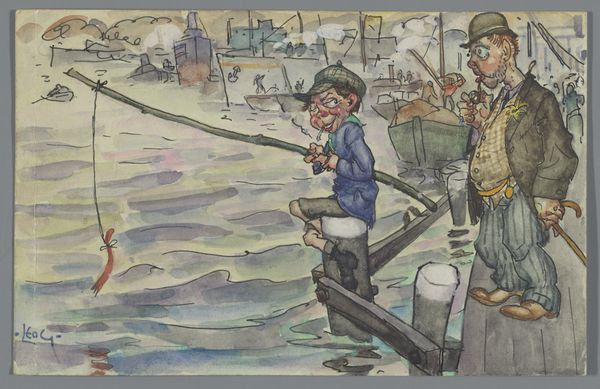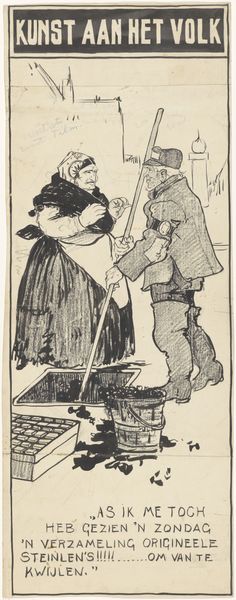
Copyright: Public Domain: Artvee
Curator: Louis Glackens’s 1908 ink and print work, "There They Blow," presents us with quite the spectacle! What’s your initial take? Editor: Overwhelming and unsettling. It has this cartoonish charm, but those whale-like figures looming in the background, coupled with the expressions on the men’s faces… It creates a weird tension. Curator: Absolutely. Glackens, known for his illustrations and association with the Ashcan School, here employs a style reminiscent of caricature and comic art, clearly designed for popular consumption, specifically “The Comic Supplement” as inscribed on the boat itself. But let’s consider the historical currents—what underlying critique might we be seeing? Editor: Knowing Glackens, and considering the "Hearst Independence League" banner wielded by the central figure, I see a biting commentary on power, media manipulation, and perhaps even the perceived recklessness of certain public figures of the time. It’s a direct jab at William Randolph Hearst, playing the "man at the helm" ready to harpoon public opinion with sensationalist narratives. Curator: A very astute reading! The composition reinforces that message: the small boat tossed about, seemingly at the mercy of monstrous "whales" labeled for specific interests, hints at the vulnerability of truth in the face of media leviathans. Editor: The two figures rowing seem like stereotypical representations; perhaps each embodied an idea to criticize within contemporary US society. They seem unenthusiastic and downtrodden; these people row the boat, giving agency to Hearst. Curator: Moreover, it fits within broader concerns of the era, as media moguls increased political power during that period, so it adds layers to unpack regarding media accountability, the power of propaganda, and how cartoon art contributed to shaping public understanding of civic themes. Editor: This image encourages viewers to question the stories they’re told and consider who’s at the helm, which ultimately is about dismantling structures that allow those harmful narratives to proliferate and go unchecked. It's also about examining how racist images from US American society endure and continue to normalize the stereotypes that support them. Curator: A perfect point. The interplay between caricature, social commentary, and historical context transforms this work into more than a simple cartoon. Editor: Right, the cartoon form doesn't shield from these critiques but delivers them with incisive humor. It acts as both an artifact and a tool of activism. Curator: Precisely. It showcases how artistic techniques can reflect societal shifts to urge greater examination into contemporary matters of justice, even across a century of intervening time.
Comments
No comments
Be the first to comment and join the conversation on the ultimate creative platform.
